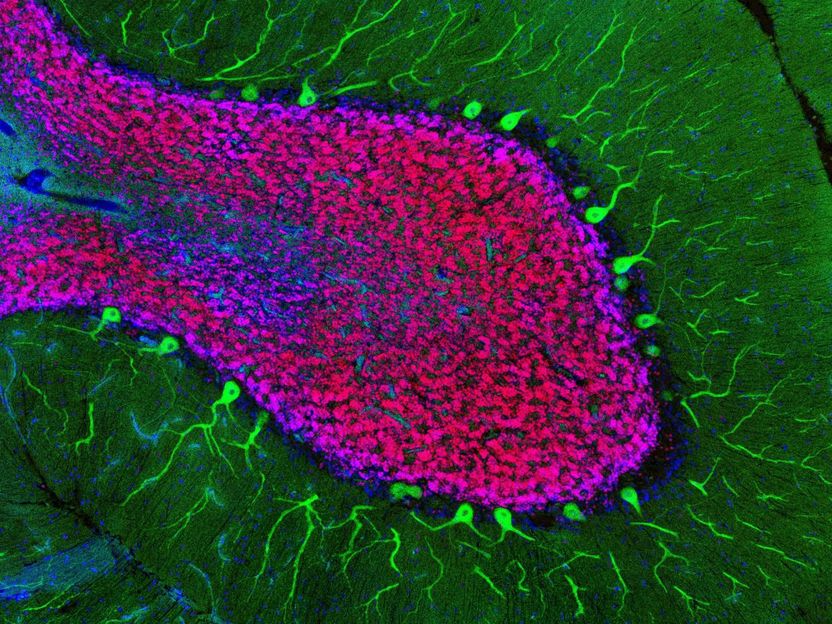Animal testing methods for endocrine disruptors should change, team argues
Review suggests that oral gavage, the accepted method of dosing lab animals to test chemical toxicity, does not accurately mimic how humans are exposed to chemicals in everyday life
Challenging risk assessment methods used for decades by toxicologists, a new review of the literature led by environmental health scientist Laura Vandenberg at the University of Massachusetts Amherst suggests that oral gavage, the most widely accepted method of dosing lab animals to test chemical toxicity, does not accurately mimic how humans are exposed to chemicals in everyday life.
Oral gavage refers to the way researchers give chemicals to animals by putting a tube down their throats to deliver substances directly to the stomach. It has been used for decades and is at present the dosing scheme preferred for assessing potential toxicity of endocrine disrupting chemicals (EDC) by regulatory agencies.
Vandenberg, with colleagues at the University of Missouri-Columbia and Université de Toulouse, France, writes, "We conclude that gavage may be preferred over other routes for some environmental chemicals in some circumstances, but it does not appropriately model human dietary exposures for many chemicals. Because it avoids exposure pathways, is stressful and thus interferes with endocrine responses, gavage should be abandoned as the default route of administration for hazard assessments of EDCs."
Though gavage does offer precise dose and timing control, the authors say it is not appropriate for assessing EDCs, using Bisphenol A (BPA) as a primary example. Its drawbacks include the fact that gavage bypasses the mouth, which means animals experience "dramatic differences in absorption, bioavailability and metabolism" than humans experience when eating food, which is thought to be way most people are exposed to BPA. Further, gavage carries well-known risks including perforation of the esophagus that diminish its value.
Finally, the authors point out that the gavage protocol itself can induce stress responses in the endocrine system, which may confound EDC assessment. "We propose the exploration of alternatives to mimic human exposures when there are multiple exposure routes/sources and when exposures are chronic," they urge. Their work appears in Environmental Health.
Vandenberg and colleagues say they chose BPA because exposure is widespread in humans, low doses have been linked to adverse effects in laboratory animals, exposure is linked to a wide range of human diseases, and unanswered questions remain about how best to model exposure routes and sources. The lack of detailed understanding of all potential routes of exposure applies to many chemicals used in a wide range of products, they add.
The researchers reviewed more than 60 papers and reports, pointing out that "for hypothesis testing, route of exposure may not be of central importance, but for hazard assessment, risk assessors typically require that studies use a route of exposure that is deemed 'relevant' to humans."
They point to recent studies in dogs and monkeys where scientists could study different BPA absorption when it was administered both by mouth and by traditional gavage. Given to dogs under the tongue, BPA entered into circulation largely in an unconjugated form, that is, without having been converted to an inactive form by the liver in so-called first-pass metabolism. By comparison, over 99 percent of the BPA was metabolized rapidly in the dogs with gavage. Similarly, less than 1 percent of administered BPA was bioavailable in blood in a gavage experiment with monkeys, while BPA fed in a piece of fruit resulted in over 7 percent of administered BPA being bioavailable in blood.
The authors point out that while "all dosing methods have pros and cons that must be considered in the design of a study," recent studies suggest that gavage may interfere with the study of EDCs and viable alternatives do exist. EDCs and drugs can be administered by milling a compound into feed, dissolving it in drinking water, feeding animals from a pipette or adding a compound to a wafer or other food. Also, implanted devices and osmotic pumps "are of particular interest in BPA studies because they can provide constant exposures to low doses that produce serum concentrations that approximate those found in humans. These routes of exposure may be relevant also because there are important and significant non-oral sources of BPA exposure," Vandenberg and colleagues state.

























































